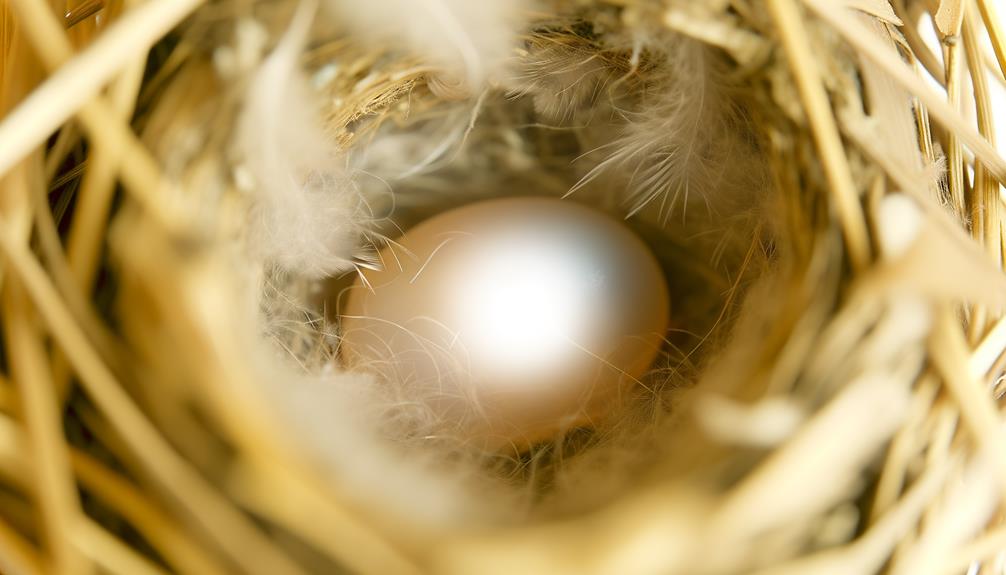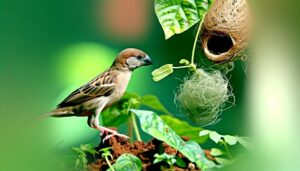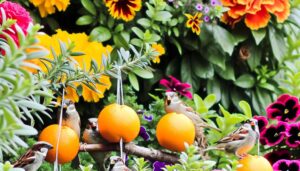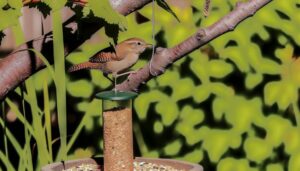10 Steps to Successfully Hatch a House Sparrow Egg
Hatching a house sparrow egg requires precise environmental control. Begin by preparing and calibrating the incubator at a stable temperature of 37.5°C (99.5°F) with 45-55% humidity.
Guarantee consistent airflow and disinfect the incubator thoroughly. Turn the eggs at least three times daily at 180-degree intervals to promote even heat exposure.
Three days before hatching, increase humidity to 65-75%. Upon hatching, maintain a brooder temperature of 95°F, reducing it gradually, and provide a high-protein diet every 20-30 minutes.
For further detailed steps and considerations in this delicate process, additional guidance is necessary.

Key Takeaways
- Maintain the incubator temperature at 37.5°C (99.5°F) for optimal embryo development.
- Keep initial humidity levels at 45-55%, increasing to 65-75% in the last 3 days.
- Turn eggs at least 3 times daily, rotating 180 degrees each time.
- Use a reliable thermometer and hygrometer to ensure accurate temperature and humidity readings.
- Place the incubator in a stable environment with consistent airflow for even temperature distribution.
Preparing the Incubator
To guarantee ideal conditions for hatching a house sparrow egg, it is crucial to carefully adjust the incubator's temperature and humidity settings. Prior to introducing the egg, thoroughly clean and disinfect the incubator to eliminate any potential pathogens.
Position the incubator in a stable environment, free from drafts and temperature fluctuations. Calibrate the incubator's sensors using a reliable thermometer and hygrometer to confirm accuracy. Verify that the humidity levels within the incubator are appropriate, typically around 50-55%, to prevent desiccation or excessive moisture.
Additionally, confirm that the incubator has a consistent airflow to facilitate even temperature distribution. Proper preparation of the incubator not only increases the chances of successful hatching but also guarantees the health and viability of the developing embryo.
Setting the Right Temperature
Maintaining an ideal temperature of 37.5°C (99.5°F) within the incubator is crucial for the successful development of a house sparrow embryo. Deviations from this temperature can lead to developmental anomalies or embryonic mortality.
Here are three key steps to ensure the accurate temperature:
- Calibrate the Thermostat: Regularly check and calibrate the incubator's thermostat to guarantee consistent and accurate temperature readings.
- Use a Reliable Thermometer: Place a calibrated, high-quality thermometer at egg level to monitor the temperature consistently.
- Minimize Temperature Fluctuations: Keep the incubator in a stable environment, away from direct sunlight, drafts, or fluctuating room temperatures.
These steps are essential to maintaining the precise thermal environment necessary for hatching house sparrow eggs.
Monitoring Humidity Levels
Monitoring the humidity levels within the incubator is crucial, as improper humidity can significantly impact the development and hatching success of house sparrow eggs. Best humidity levels should be maintained between 45% and 55% during the initial incubation period. This range guarantees proper moisture retention within the egg, facilitating normal embryonic development.
As hatching approaches, typically in the last three days, humidity should be increased to around 65% to 75% to prevent the membrane from drying out and becoming too tough for the chick to break through. Utilizing a reliable hygrometer to monitor and adjust humidity is vital.
Periodic checks and adjustments, such as adding water to the incubator's reservoir, help maintain these crucial humidity levels.
Turning the Eggs
In addition to maintaining ideal humidity levels, regularly turning the eggs is a critical component of the incubation process to guarantee uniform heat distribution and prevent the embryo from sticking to the shell membrane. This practice mimics the natural behavior of the parent bird and ensures prime embryo development.
To achieve effective egg turning:
- Frequency: Turn the eggs at least three times daily to prevent prolonged pressure on any single point.
- Angle: Rotate the eggs 180 degrees each time, alternating directions to ensure equal exposure to heat.
- Consistency: Maintain a steady schedule to provide a stable developmental environment.
Adhering to these guidelines promotes healthy embryonic growth and increases the likelihood of successful hatching outcomes.
Caring for the Hatchling
Once the house sparrow egg has hatched, it is crucial to provide the newborn chick with a controlled environment that closely mimics natural conditions to secure its survival and healthy development.
The ambient temperature should be maintained at 95°F (35°C) initially, gradually decreasing by 5°F each week until it reaches room temperature. Humidity levels should be kept around 50-60% to prevent dehydration.
Feeding should occur every 20-30 minutes with a high-protein diet, such as a mixture of soaked cat kibble and hard-boiled egg yolk, served via a syringe. Cleanliness is paramount; make sure the brooder is sanitized regularly to prevent infections.
Adequate sleep and minimal handling will further contribute to the chick's well-being and growth.
Conclusion
Successful hatching of a house sparrow egg is akin to nurturing a delicate piece of art, requiring meticulous attention to temperature, humidity, and egg rotation. The process demands precision and unwavering commitment, ensuring each variable is controlled to create an ideal environment.
Ultimately, the careful orchestration of these factors culminates in the emergence of a new life, underscoring the intricate balance between science and nature in avian reproduction. This delicate dance underscores the profound responsibility entrusted to the caretaker.






